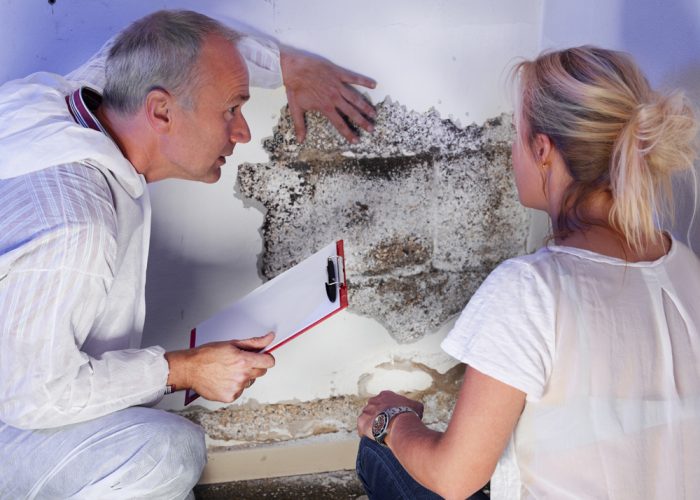
Mold Growth After Water Damage: Prevention & Remediation Tips
Water damage can be a devastating event for any homeowner or business owner. Whether it be from a burst pipe, flooding, or a leaky roof, water damage can lead to a host of problems, including mold growth. Mold thrives in damp, humid environments, making it a common issue after water damage occurs. In order to prevent and remediate mold growth effectively, it is crucial to take quick action and follow proper procedures.
Understanding Mold Growth After Water Damage
Mold is a type of fungus that can grow on virtually any surface where moisture is present. After water damage occurs, mold spores in the air can quickly settle on damp surfaces and begin to multiply. Mold growth can start within 24-48 hours of water damage, so it is essential to act quickly to prevent further damage.
Mold thrives in damp, dark environments, making it difficult to detect in the early stages. Common signs of mold growth after water damage include musty odors, visible mold growth on walls or ceilings, and respiratory issues such as coughing, sneezing, and nasal congestion. If you suspect mold growth after water damage, it is crucial to address the issue promptly to prevent health risks and further damage to your property.
Preventing Mold Growth After Water Damage
Preventing mold growth after water damage begins with taking quick action to dry out affected areas. Here are some prevention tips to help mitigate mold growth after water damage occurs:
- Remove standing water: If water damage is caused by flooding or a leak, it is essential to remove standing water as quickly as possible. Use a wet/dry vacuum or hire a professional water damage restoration company to extract the water and dry out the affected areas.
- Dry out affected areas: Once standing water is removed, it is crucial to thoroughly dry out the affected areas to prevent mold growth. Use fans, dehumidifiers, and open windows to increase ventilation and promote drying.
- Inspect for hidden water damage: Mold can grow in hidden areas such as behind walls, under floors, and crawl spaces. To prevent mold growth, inspect for hidden water damage and address any issues promptly.
- Clean and disinfect: After water damage occurs, cleaning and disinfecting affected areas is essential to remove mold spores and prevent further growth. Use a mixture of water and detergent to clean surfaces, and then disinfect with a solution of bleach and water.
- Monitor humidity levels: Keeping humidity levels below 60% can help prevent mold growth. Use a dehumidifier to control humidity levels in your home or business, especially in damp areas such as basements and bathrooms.
Remediating Mold Growth After Water Damage
If mold growth occurs after water damage, it is essential to take immediate action to remediate the issue. Mold remediation involves identifying and removing mold growth and ensuring that affected areas are properly cleaned and dried. Here are some remediation tips to help you deal with mold growth after water damage:
- Identify the source of water damage: Before remediation can begin, it is crucial to identify and address the source of water damage to prevent further mold growth. Whether it be a leaky pipe, a roof leak, or flooding, addressing the source of water damage is essential to preventing mold growth.
- Remove mold-affected materials: If mold growth is extensive or stubborn, it may be necessary to remove mold-affected materials such as drywall, insulation, or carpeting. Removing affected materials can help prevent further mold growth and ensure that all mold spores are removed.
- Clean and disinfect: After removing mold-affected materials, cleaning and disinfecting affected areas is essential to remove mold spores and prevent further growth. Use a mold-specific cleaner or a mixture of bleach and water to clean surfaces and thoroughly dry out the area.
- Monitor for mold growth: After remediation is complete, it is vital to monitor for mold growth in the future. Keep an eye out for musty odors, visible mold growth, or signs of water damage that could lead to mold growth. If mold reoccurs, it may be necessary to enlist the help of a professional mold remediation company.
Contact Us for a Consultation!
If you are dealing with mold growth after water damage and need professional assistance, Ahold of Mold Environmental is here to help. With over 24 years of experience serving customers in Buffalo, Kenmore, and Erie County, NY, we specialize in mold removal, indoor air quality testing, water damage restoration, asbestos testing, duct cleaning, mold air testing, and home assessments. Our NY state-certified mold remediation contractors are dedicated to thoroughly remediating mold growth and saving you and your family from the potential harmful toxins and allergens associated with mold.
Don’t let mold growth after water damage jeopardize your health and property. Contact Ahold of Mold Environmental today for reliable and efficient mold remediation services. Learn more about our services and schedule a consultation. Let us help you take control of mold growth after water damage and create a safe and healthy environment for you and your loved ones.
Categorised in: Mold Prevention, Water Damage Restoration


